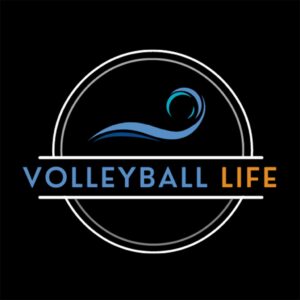
Jon Alvarez, Volleyball Life, and “volleyball people doing cool stuff for volleyball”
HERMOSA BEACH, CALIFORNIA — Jon Alvarez’s professors at the University of Denver’s Daniels College of Business had to have been tired of it. Every single time they assigned Alvarez to write a business plan, he’d come back with the same two ideas: “It was either a volley bar or Volleyball Life,” he said, more than three decades later, laughing.
Both of those plans read as a prescient ideas now, with volleyball, be it indoors or beach or grass, exploding around the country. Nebraska is selling out football stadiums. The Pottstown Rumble’s participants jumped yet another 250 teams, up to a staggering 2,650 for a single weekend. The NCAA Beach Volleyball Championships are setting viewership records annually. Last year’s FIVB Beach Volleyball World Championships did the same.
But in the ’90s? In Texas?
Volleyball?
Coming from a guy?
Suffice it to say, people had questions.
In spite of those questions and odd looks, Alvarez did the same thing he’s done since 1993, when he scrawled a logo on a piece of paper that, 14 years later, would become an image seen by 5 million visitors on a monthly basis at VolleyballLife.com: “I held true to my beliefs.”
It took more than a decade for Alvarez to take one of his many business plans, and that hand-drawn logo, and bring it to life. In 2007, still living in Texas and one of the better players in the Dallas area, Alvarez alas launched Volleyball Life, his tournament software that would solve every tournament director’s problems and then some.
Problem was, nobody wanted it.
Why would they pay him for a service they could do themselves with simple pen and paper? This was an era before Instagram or TikTok. The NCAA had yet to take a shot on beach volleyball as an emerging sport, and no college coaches, therefore, needed to know what juniors were winning what tournaments. The parents, by extension, didn’t mind of people they didn’t know around the country were aware of their kid winning the local tournament. It didn’t really matter.
Yet.
“Everyone was still afraid of technology,” he said.
But he held true, reminding directors and anybody who would listen that he had a product that could change grassroots volleyball around the country. A decent player, though by his own admission not a great one, Alvarez moved to California shortly after Donald Sun bought the AVP out of bankruptcy in 2010, reviving the sport as a professional endeavor. To some, this appeared, on the surface, that Alvarez was taking a genuine crack at becoming an AVP player.
“When I moved out here, people were like ‘Why are you moving out to California, you’re not that good!’ I knew that,” Alvarez said. “I wasn’t even winning tournaments in Dallas. Why would I win tournaments here? It was about making the connections and growing my knowledge of the sport.”
While he never did make a main draw, upon moving west to Huntington Beach, he quickly found himself in practices at the Pier with Ty Tramblie and his coach, Gary Schreiber, and whomever Tramblie was partnering with at the time. He got to know the other regulars — Casey Patterson and Jake Gibb, Ryan Doherty and Ty Loomis, Mike Brunsting and Chase Frishman, Taylor Crabb and Trevor Crabb.
And Ed Ratledge.
Ratledge was something of a unicorn then, a veteran AVP professional who leveraged his resume as a player to launch a beach volleyball club, VolleyOC, which he ran off Newland Street in Huntington Beach. As the number of juniors boomed, and his tournaments swelled in size and complexity, he figured it might not hurt to offload some of his administrative duties to a technology in which scores could be updated, pools seeded, playoff brackets set, and schedules maintained all in a few easy clicks from an increasingly technologically savvy generation of players.
“You’ve always been talking about this and I need something right now,” Ratledge told Alvarez in 2017. “If you build it, I’ll use it.”
“I’ll build it,” Alvarez said, “and a lot more.”
Volleyball Life
Slowly at first, and then seemingly all at once, more tournament directors began switching from pen and paper or BracketPal and turning to Alvarez and Volleyball Life. Just as he promised Ratledge he would, he built it — and a whole lot more.
Now, when you log onto Volleyball Life, you can find virtually any beach volleyball tournament in the country, be it juniors or adults, grass or beach, semi-professional or strictly recreational. You can find rankings and identify the most talented juniors in the nation. College coaches love it. Parents love it because the college coaches love it. It has reached a point that, if tournament directors are not running their tournaments via Volleyball Life, it is almost a disservice to the juniors who could be using it as a tool to get recruited. It makes it exponentially easier, to an incalculable degree, for coaches at, say, USC and UCLA to discover the talents of a Sarah Wood, a 15-year-old from Glen Mills, Pennsylvania who is already one of the most coveted recruits in the country.
“We’re just trying to make everything easier,” Alvarez said. “We’re trying to make it easier for college coaches. There’s a lot of data driven stuff that is cool to do and fun to do and it helps the sport in general.
“The parents have been our biggest supporters because all the tournaments are in one place, their girls are getting free profiles, now we’re doing a bunch of stuff with the AVCA, college coaches are on our system every day. It’s all free for the juniors. We want to touch everything volleyball.”
And that, at the core, is Alvarez’s chief mission: “What it is, is volleyball people doing cool stuff for volleyball.”
Seemingly everyone has noticed. From 2022-2023, Volleyball Life grew by more than 70 percent in terms of volume hosted on its site. More than 3,000 events were run through its software. Four of the five major sanctioning bodies use Volleyball Life, including USA Volleyball. The quintet of tournaments Alvarez labels the Big Five — Fuds, the biannual fours tournament in Fort Walton Beach, Florida; the Motherlode, a beach tournament held on Labor Day weekend in Aspen, Colorado; the Pottstown Rumble, a grass colossus in Pottstown, Pennsylvania; the Waupaca Boatride, a grass and beach bucket lister in Oshkosh, Wisconsin; and Seaside, the can’t-miss beach volleyball festival in Seaside, Oregon — have all migrated to Volleyball Life, bringing their tens of thousands of teams with them.
“Waupaca and Pottstown are hovering around 1,900, 2,000 teams. The second year we did it, Pottstown grew to 2,400. This year, 2,650. They grew by another 250 teams. It’s insane. Waupaca, same thing,” Alvarez said. “They were around 1,900 or 2,000. They had to cut theirs off because they didn’t have the court space. They did a little rearranging and they had 2,654 this year. They’re both amazing events. Seaside was in the 1,600, 1,700 range. Last year we hit 1,800. This year we hit over 2,200. It’s amazing to see the growth. I don’t know how they did it before computers.”
He hasn’t ever really had to bother with that notion: He’s been cooking this up since 1993. Throughout the growth, he’s never lost sight of his initial vision: volleyball people doing cool stuff for volleyball. Which is why everyone he has hired, from contractors to full-time employees, have a background of some sorts in volleyball.
“I always wanted to make an impact on the sport,” he said. “I knew I wasn’t going to make it as a player.”
Better: He can make an impact on virtually every single player in the country who will use his software.
“We’re getting to a point now where we have five or six years of data on players,” Alvarez said. “It really can encompass the life of a volleyball player. That’s why it’s called Volleyball Life.”
The post Jon Alvarez, Volleyball Life, and “volleyball people doing cool stuff for volleyball” appeared first on Volleyballmag.com.
Read More Volleyballmag.com Beach, Pro Beach


